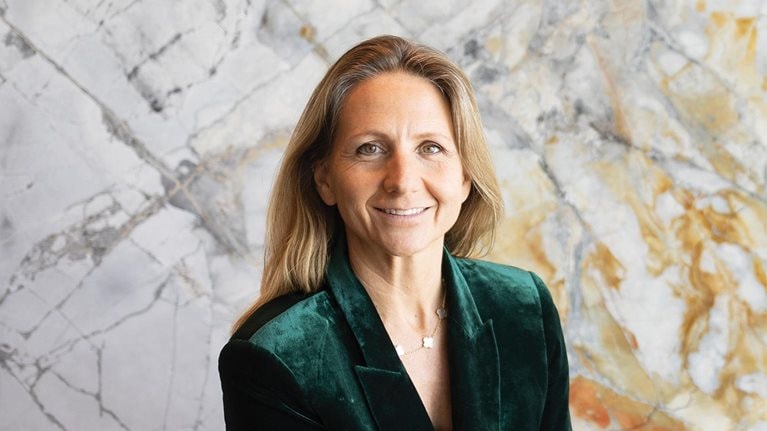We’ve all heard of “the glass ceiling,” that oft-referenced notion that there is an invisible barrier that women bump up against when they try to ascend beyond a certain level of leadership and responsibility despite being more than qualified for the task.
There’s just one problem: “It’s a myth,” says Natasha Bergeron, Expert Associate Partner in the Montreal office of global management consulting firm McKinsey.
Bergeron co-led the firm’s 2021 Gender Diversity at Work in Canada report, a comprehensive deep dive that looked at everything from burnout to the rise of automation and the effects of the pandemic on equity and inclusion.
One of the most striking findings in the report is that despite the modest gains in women’s representation across the talent pipeline, women and ethnic minorities remain significantly underrepresented at the top of organizations.
“What we’re seeing in the data is that it’s not a glass ceiling,” says Bergeron of this phenomenon. “It’s a leaking pipe, or what we call a ‘broken rung.’”
Microaggressions and bias
Bergeron explains that women and people of colour have less access to the first level of promotion that typically happens a couple of years after someone joins an organization. Then, that lack of access persists at each step of the career ladder. She points to data showing that women in Canada make up around 50 percent of entry level workers, but only 30 percent of more senior roles.
“This leaking pipe is ‘most acute’ when it comes to women of colour,” Bergeron notes. Across the 50 Canadian companies McKinsey surveyed, women of colour made up 17 percent of entry level roles and just 6 percent at the executive level, meaning two-thirds of women of colour are blocked at some stage in the talent pipeline.
As for why that’s happening? “It’s a multi-layered problem,” Bergeron says, “But one contributing factor is the prevalence of microaggressions.” The report found that 70 percent of women of colour had experienced microaggressions in the workplace.
“It’s being interrupted or being spoken over more than others, having your judgment questioned in your area of expertise, feeling like you have to be careful when talking about yourself or life outside work,” she explains. “They’re all small things, and when you look at it individually, it looks minor. [But] it’s the accumulation that impacts the experience.”
Coupled with unaddressed biases—intentional or unconscious—and a lack of sponsorship, mentorship, and allyship from more privileged groups, this can create an environment where women of colour are overlooked or not encouraged to apply when promotions come up.
“This can lead to a sense of futility, a feeling of, ‘Why would I even bother when I know that I won’t be picked?’” says Bergeron, who is a woman of colour herself. She notes that the “motherhood penalty” can also impede advancement opportunities.
“Sometimes there are decisions that are made for people, like ‘Hey, I won’t offer this opportunity because she’s not as dedicated at work or career advancement is not as important for her,’” she says. “I have three kids, and I’ve personally lived this.”
Bergeron applauds the flexible work opportunities at McKinsey that have helped her juggle parenthood with a thriving career, such as the Take Time program, a flexible working initiative that allows people to go part-time and smooth the transition to and from parental leave.
“Organizations [that] have programs to help manage around these life realities—parenthood, taking care of elderly parents, all those things that just happen—create different pathways to progress,” says Bergeron. More pathways translate to more flexible routes to climbing that ladder.
Taking steps toward equity
Bergeron says that McKinsey’s research has shown that companies that have made the most progress in diversity, equity, and inclusion (DE&I) tend to do the same two things. The first important step is building a focus on diversity into the company’s everyday operating models.
“This means they track many diversity metrics such as gender, race, sexual orientation, disability, and more, and they look at the data from all angles to see where the opportunities lie,” Bergeron says. “It also means holding senior leaders accountable for progress (or lack thereof), and ‘giving it some teeth’ by tying it to their performance. Some organizations even go as far as tying DE&I progress to financial incentives. Top performers are also taking steps to minimize bias—not just in hiring, but in performance reviews and promotions as well.”
Meaningful [DE&I] training supports open, candid, sometimes uncomfortable conversations while educating people.
“The second step toward unblocking the talent pipeline involves fostering a culture of inclusion,” Bergeron says. “This can look like sponsorship and mentorship programs that create systems of support and allyship. It also involves training that goes beyond a virtual presentation that workers can click through mindlessly.”
“Meaningful training supports open, candid, sometimes uncomfortable conversations while educating people,” says Bergeron.
“An inclusive workplace also prioritizes employee well-being in a concrete way,” she adds.
“That’s especially important in this pandemic and remote work context, where we see consistent data around people feeling burned out,” says Bergeron. “People who are burned out are 1.6 times more likely to consider taking a job at a different company. Culture and well-being are important to keep your talent, both men and women.”
In short: there is no silver bullet. If you want to unblock the talent pipeline for your diverse workforce, it requires an ecosystem with concrete initiatives and deep commitment from the leadership.
“At a macro level, organizations truly need to put effort behind this and have conviction around diversity, equity, and inclusion,” says Bergeron.
“It’s not just this ‘woke,’ ethical nice-to-have. It’s a true belief that diversity, equity, and inclusion lead to better performance, better decision making, and better ability to innovate because you have the voice of everybody in the room.”

